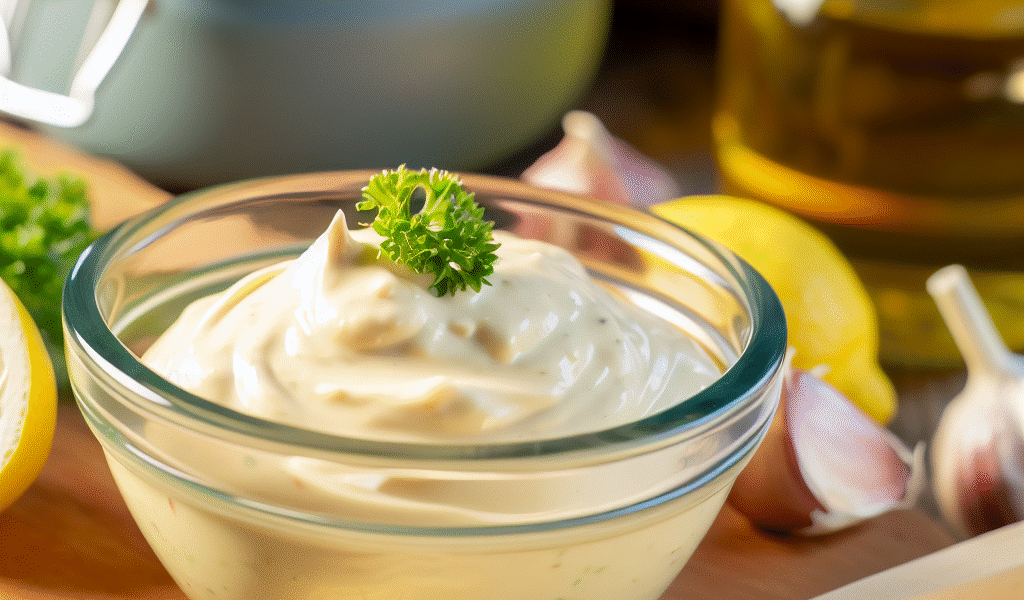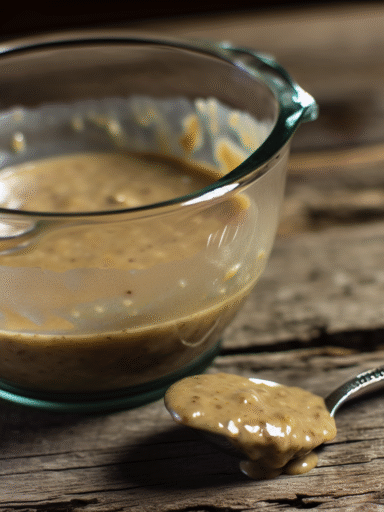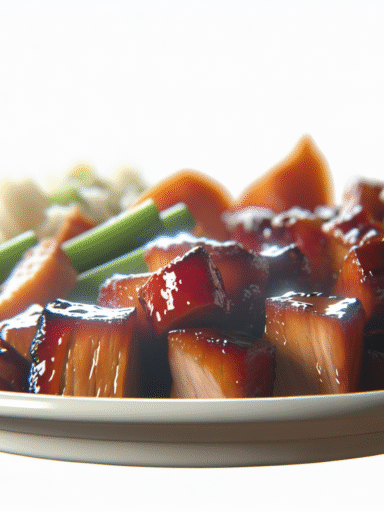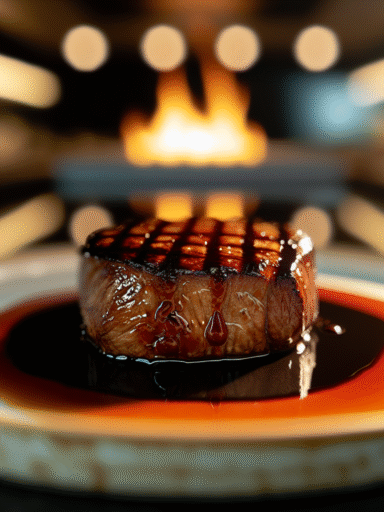Vegan Mayonnaise
Tags / Categories: Creamy, Tangy, Plant-Based, Egg-Free, Oil-Based, American, Condiment, Sandwich Spread, Salad Dressing
Quick Info Box
- Prep Time: 5 minutes
- Cook Time: 0 minutes
- Total Time: 5 minutes
- Difficulty Level: Easy
- Yield: About 1 cup (240 ml)
Introduction
If you’ve ever missed the creamy, tangy goodness of mayonnaise on a sandwich or in a salad dressing, but want to keep things completely plant-based, you’re in for a treat. Vegan mayonnaise is surprisingly simple to make right at home, and it’s not only kinder to the planet but also endlessly customizable. Let’s dive into a recipe that brings that rich, smooth texture without any eggs or dairy.
Vegan Mayonnaise Ingredients
- 1/2 cup unsweetened soy milk (or other plant milk like oat or pea-based)
- 1 cup neutral oil (like sunflower, grapeseed, or light olive oil)
- 1 tablespoon apple cider vinegar or lemon juice
- 1 teaspoon Dijon mustard
- 1/2 teaspoon salt (more to taste)
- 1/4 teaspoon garlic powder (optional, but oh-so-good)
- 1 teaspoon maple syrup or agave (optional for a touch of sweetness)
How to Make Vegan Mayonnaise: A Smooth & Creamy Delight
Ready to blend up something magic? Don’t worry if you’re new to making mayo at home — it’s like giving your blender or hand mixer a chance to dazzle. Here’s a step-by-step guide that’ll have you spooning out creamy goodness in minutes.
- Start With Your Plant Milk: Pour the soy milk into a tall mixing container or the bowl of a powerful blender. Soy milk is especially great because its protein content helps the emulsification, but you can swap it with other plant milks low in fat.
- Add the Acidity: Toss in the apple cider vinegar or fresh lemon juice. This adds that classic tang and gives your vegan mayo that authentic kick.
- Mustard Magic: Add the Dijon mustard. It’s not just for flavor but also helps stabilize the mixture, improving the texture.
- Let’s Blend: Begin blending on medium speed. Slowly drizzle in your neutral oil while the blender runs. Patience is key! Pouring too fast can cause it not to emulsify, so take about 1-2 minutes for this step. You’ll notice the mixture thicken and become creamy — that’s the good stuff happening right there.
- Season and Taste: Mix in salt, garlic powder, and if you like a hint of sweetness, maple syrup. Give it one more quick whirl. Don’t stress if it’s a little chunky at first – a quick extra blend usually smooths things out.
- Adjust & Store: Taste and tweak. Maybe a bit more lemon juice if you like it tangier or an extra pinch of salt. Pour your mayo into a clean jar and refrigerate. It’ll firm up slightly as it chills, so don’t worry if it seems a tad loose at first.
Serving Suggestions: Where to Slather Your Vegan Mayo
- Spread it on sandwiches or wraps instead of traditional mayo for a creamy boost.
- Use it to make dairy-free potato salad, coleslaw, or vegan deviled “eggs.”
- Stir into vegan tuna or chickpea salad for a perfect party appetizer.
- Mix with fresh herbs and lemon for a quick, tangy dipping sauce for fries or veggies.
Origin & History
The concept of mayonnaise dates back to the 18th century, traditionally made with eggs and oil emulsified into a creamy sauce. Vegan mayonnaise, however, is a more modern invention, rising in popularity alongside the plant-based movement over the last few decades. Thanks to advances in plant proteins and creative cooks experimenting with emulsification techniques, we can now enjoy that familiar tang and luscious texture without eggs or any animal products — a win for vegans and those with allergies alike.
Variations & Substitutions
- Plant Milk Swap: While soy milk emulsifies best because of its protein, oat or pea milks are great alternatives for those avoiding soy. Just avoid high-fat plant milks like coconut milk as they don’t emulsify well.
- Oil Options: Use avocado oil, light olive oil (not extra virgin), or even refined coconut oil (melted) for subtle flavor variations.
- Flavor Boosters: Add fresh herbs like dill or basil, smoked paprika, or a dash of sriracha for spicy mayo.
- Low-Fat Version: If you want a lighter spread, reduce oil quantity slightly and add a bit more plant milk and lemon juice.
Storage & Make-Ahead Tips
Your homemade vegan mayo keeps beautifully in the fridge for up to 1 week. Always use clean utensils to scoop it out to avoid contamination. It doesn’t freeze well because the texture changes, so I wouldn’t recommend freezing. However, prepping it a day ahead lets the flavors meld nicely — plus, it thickens up, making it perfect when you’re ready to serve!
Nutritional Information (Per 2 Tbsp Serving)
- Calories: Approximately 140 kcal
- Fat: 14 g (mostly from healthy unsaturated oils)
- Carbohydrates: 1 g
- Protein: 0.5 g
- Fiber: 0 g
Related Sauces / Try Next
FAQ
- Can I use any type of plant milk to make vegan mayonnaise?
- For best results, use unsweetened soy milk because its protein content helps the sauce emulsify properly. Oat and pea milk work too, but avoid creamy or high-fat options like coconut milk since they don’t blend as smoothly.
- Why isn’t my vegan mayo thickening?
- This usually means the oil was added too quickly or the blender speed was too low. Try pouring the oil in very slowly while blending steadily. Also, using the right plant milk with adequate protein like soy milk is key to thickening.
- How long does homemade vegan mayo last?
- Stored in an airtight container in the fridge, it’ll stay fresh for up to one week. Always use clean spoons to avoid contamination and check for any off smells before using.
Conclusion
Creating your own vegan mayonnaise is easier than you might think and surprisingly rewarding. With just a few basic ingredients and a little patience as you blend, you get a silky, tangy condiment that complements dozens of dishes without any eggs or dairy. Next time you want that classic mayo flavor, give this recipe a whirl — your sandwiches, salads, and dips will thank you!



